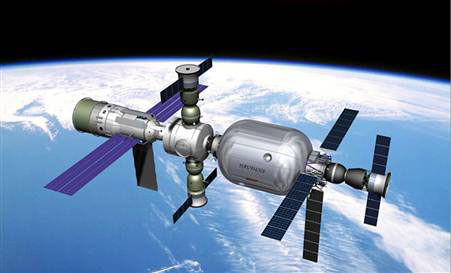






Taking the High and (Mount) Lowe Roads
America’s Space Prize has Parallels in SoCal History
By Steve Bartlett
A wealthy entrepreneur plans to build a luxury hotel in a remote location but has no way to get his customers there. The place is currently inaccessible and would require the best science and engineering available to reach it. So he risks much of his fortune to build the hotel and develop a new transportation system to bring tourists to his inn. He promises that guests will have a spectacular view on their “ride in the sky” and that they’ll tell all of their friends about it. And when the transportation system isn’t hauling tourists, he says that it can be used to deliver other valuable cargoes where they’re needed. He claims that besides serving as a hotel, the complex can also support scientific research and astronomical observations.
 |
| Bigelow’s conception of a space hotel. Image courtesy of Bigelow Aerospace |
In 2005, this scenario describes millionaire Robert T. Bigelow’s plans to build a hotel in Earth orbit, where guests will frolic in zero-G and have amazing views of the home planet below. But reaching Bigelow’s proposed playground in space at a reasonable cost exceeds the capabilities of transportation systems currently available. So Bigelow has offered the $50 million “America’s Space Prize” to the first team that can build and fly a vehicle to deliver 5-7 passengers to the hotel for their stay. On the ride into space, the space tourists would see a grand view of the Earth as they climbed out of the atmosphere and into orbit. The hotel can also serve as a waystation for crews and cargoes going to and from the Moon and Mars and can accommodate Earth and astronomical observations.
In 1892, another entrepreneur, inventor and balloonist Professor Thaddeus Lowe, wanted to build a luxury hotel deep in the San Gabriel Mountains. The Alpine Tavern, located on Mount Lowe, would be a Swiss-style chalet, where guests could relax and play in wooded splendor. Unfortunately, there was no means available to deliver wealthy patrons to the hotel quickly and comfortably. The only existing way to reach the Tavern’s proposed site was on foot or horseback by narrow, dangerous trails. So Lowe proposed building a railway from Altadena to Mount Lowe. The route would be steep and difficult, following a serpentine path up the mountain, and the railway would push 19th century transportation technology to its limits.
Lowe and his fellow investors poured their personal fortunes into building the hotel, the Mount Lowe Railway, and an accompanying transportation and entertainment complex. For the next three years their crews poured foundations, built bridges, blasted paths through the mountainside, and laid railroad tracks from the end of Lake Avenue up to the hotel. The longest straight run on the miles of railway was just over two hundred feet.
 |
| A vintage postcard of the thrilling ride up Mount Lowe. Image courtesy of the Mount Lowe Preservation Society |
Lowe promised passengers a spectacular view on his “Railway to the Clouds” and kept that promise in grand fashion. In the 43 years that the Mount Lowe Railway and Alpine Tavern operated, the complex became a world famous tourist attraction and tens of thousands of passengers rode up the mountainside. When not carrying people, the railway hauled ore from the adjacent Dawn goldmine. The complex also supported scientific research with an observatory located at the site.
The Mount Lowe railway and Alpine Tavern shows us that private investors with vision and perseverance can achieve great things despite large natural obstacles. They can overcome technical challenges to deliver passengers where they’re going quickly and safely. They show that large numbers of tourists and hotel guests can be drawn to remote locations if the trip to get there is convenient and interesting and if they have things to do when they reach their destinations.
Robert Bigelow, like Thaddeus Lowe before him, is an entrepreneur with a vision: he wants to build a great hotel in a remote location and give his guests a once-in-a-lifetime experience when they’re there. May he have as much success in space and his complex last just as long as his predecessor’s did on Mount Lowe.
Although the Alpine Tavern and Mount Lowe Railway were largely destroyed due to natural and manmade causes between 1936 and 1959, the Mount Lowe Preservation Society has restored many areas along the rail route. Hikers can walk the route of the rail line, see parts of the bridges and rail beds, and visit the site of Alpine Tavern. These are all part of the Angeles National Forest and are accessible on foot from the end of Lake Avenue in Altadena. For more information, check out the Preservation Society’s website: http://www.mountlowe.org.
Copyright © 1998-2007 Organization for the Advancement of Space Industrialization and Settlement. All Rights Reserved.